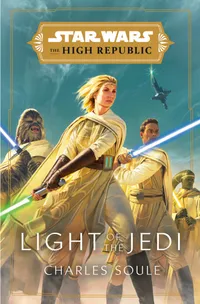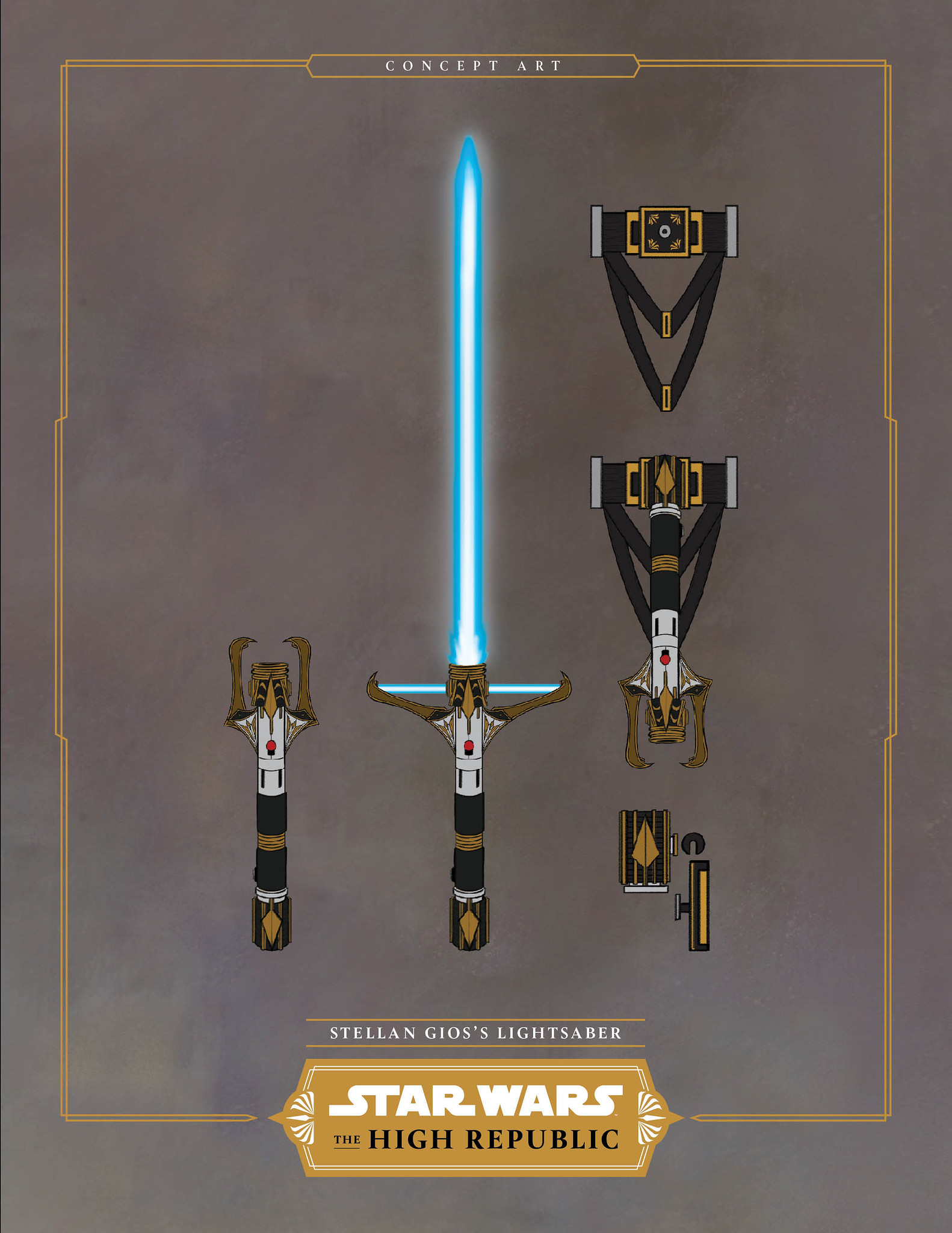'Star Wars: The High Republic' writers discuss the Jedi Order's finest hour (exclusive)
With a fresh new year comes a bold new era of "Star Wars" storytelling as Disney's Lucasfilm unleashes its highly anticipated first wave of "The High Republic" novels, books and comics beginning this month, with its intertwined stories spread across multiple publishing platforms.
Set 200 years prior to "Star Wars: The Phantom Menace" during the Jedi Knights' glory years, these heroic new space opera tales unspool while the mystic protectors were the official guardians of peace and justice for the Galactic Republic before the dark times fell.
To pen the lineup of print releases for "Star Wars: The High Republic," Lucasfilm Publishing selected Charles Soule ("Light of the Jedi"), Justina Ireland ("A Test of Courage"), Claudia Gray ("Into the Dark"), Cavan Scott (Marvel's "The High Republic" comic), and Daniel José Older (IDW's "Star Wars: The High Republic Adventures" comic) to lead the charge into this expanded universe. Lucasfilm Publishing's creative director Michael Siglain will oversee this project.
Related: Disney announces nine new 'Star Wars' shows plus an 'Alien' series
Star Wars: Light of the Jedi. $18 on Amazon
Centuries before Luke Skywalker, there was the High Republic and a golden age of the Jedi. "Light of the Jedi" is one of many new books and comics in the series available now.
Space.com chatted with this stellar gathering of writers during December's virtual press junket to learn more about working on the crossover publishing effort, why this golden age of the Jedi appealed to their artistic instincts, the allure of Starlight Beacon space station, and what geeky surprises fans might look forward to starting Tuesday (Jan. 5), when the legendary lightsabers flare.
This panel interview has been edited for length and clarity.
Space.com: What were some of the qualifications or qualities you were searching for in assembling this dream team of storytellers?
Breaking space news, the latest updates on rocket launches, skywatching events and more!
Michael Siglain: We were looking for current authors that had a very distinct point of view. Authors who could tell big expansive stories, but also very personal stories and, you know, we also were looking for fan favorite authors. There was a lot that went into the list. And honestly, we struck upon these five immediately and happily they all said "yes" right away.
Space.com: Why is this the perfect time to launch "The High Republic" with its hopeful, optimistic outlook?
Daniel José Older: I think something that's really exciting is we get to see sci-fi imagine how terrible things can go so often with dystopias and this is an amazing opportunity for us as writers. Where we start out is a vision of the galaxy that is functioning, that is, good government that is good. The Republic being out in the world and the Jedi especially helping people, being peacekeepers, living their best lives and being part of the world. And it's exciting to think about what that might look like and how that affects the Jedi's mind state and their choices.
Cavan Scott: And we've never seen the elegant age, the more civilized age when you need elegant weapons. We've always seen a galaxy which is tearing each other apart. In the era of "Star Wars" you love, there's largely some pretty dire things going on, and that's not to say "The High Republic" is not going to have its moments. We wanted to see the Jedi in the Republic at a point in time when they are comfortable, because it's always interesting to set these people up and then knock them down and see how they cope. The Jedi have been at their height for hundreds of years and the Republic is pushing out in every direction. Then they come up against an unstoppable force that absolutely knocks them down and changes their view of everything.
Charles Soule: When we started writing these books and coming up with this initiative it was two and half years ago, and it was a very different world than it is today. But the world that "The High Republic" is launching into is a world that could use some books about hope and functioning systems and a world where things are good and if you work together, good things happen.
And that is a happy accident for all of us. I think that on Jan. 5, when these books come into the world, they're going to feel good to a lot of people who read them. I was just reading the last couple chapters when I got my copies of the hardcover the other day and I'm glad this is the book I wrote. I think we all feel pretty much the same.
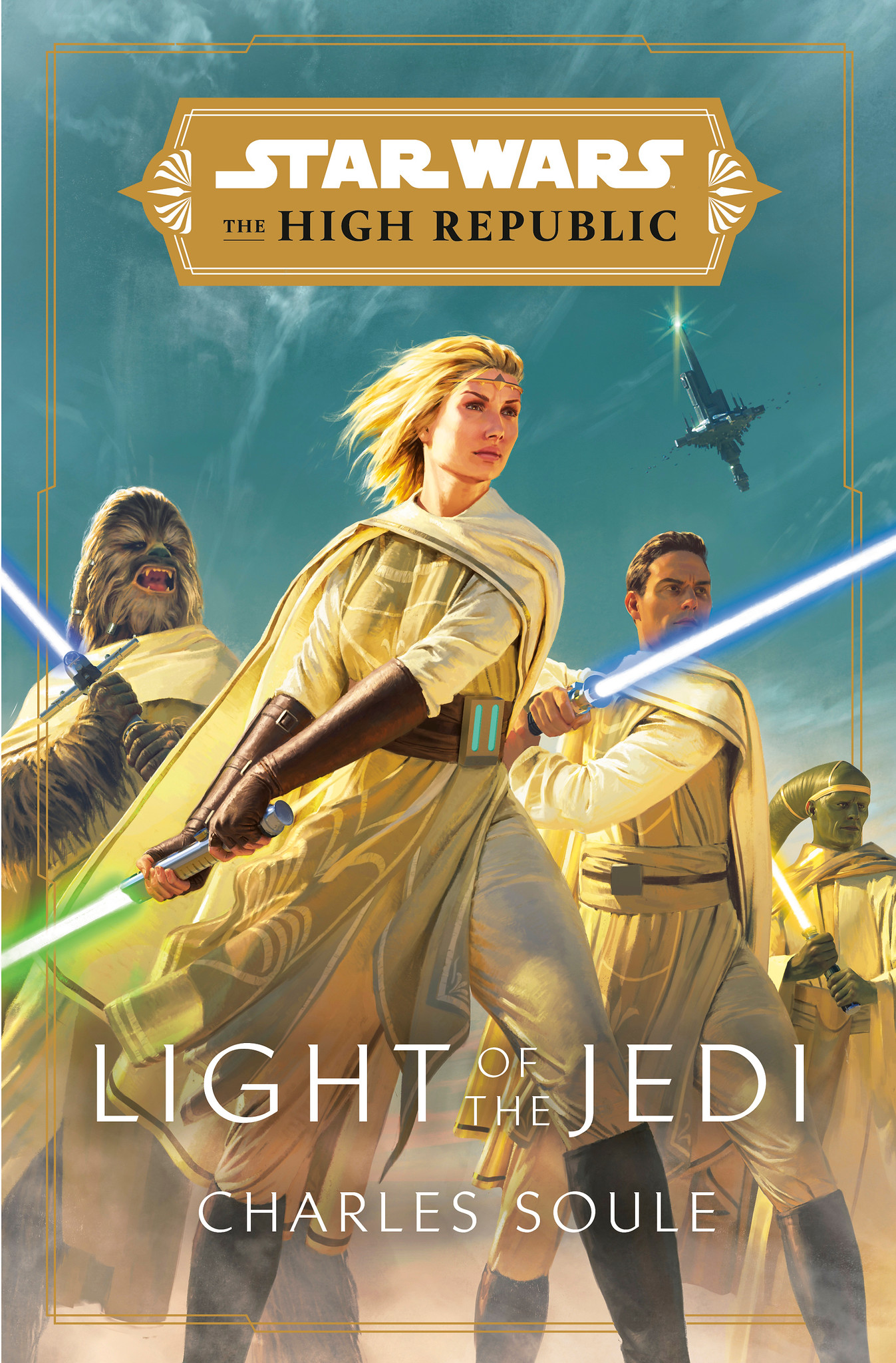
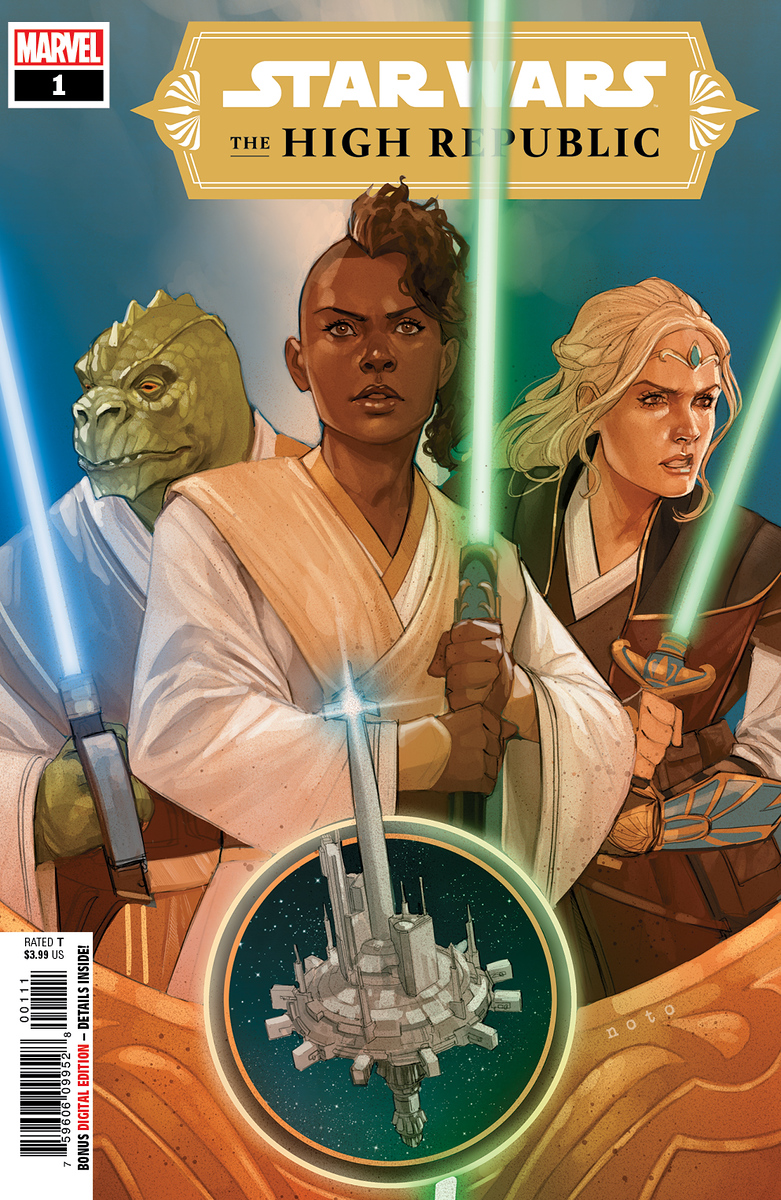


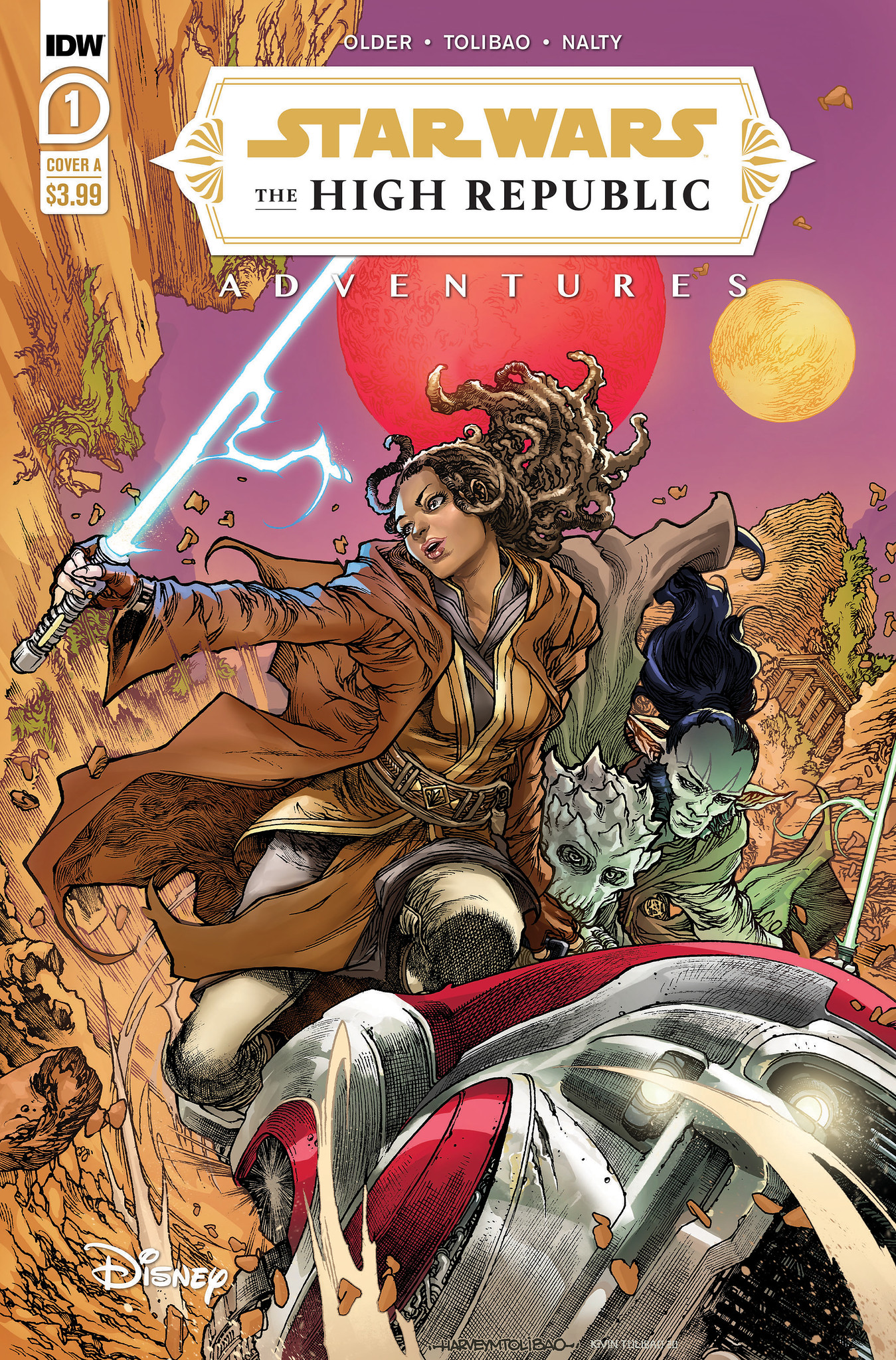
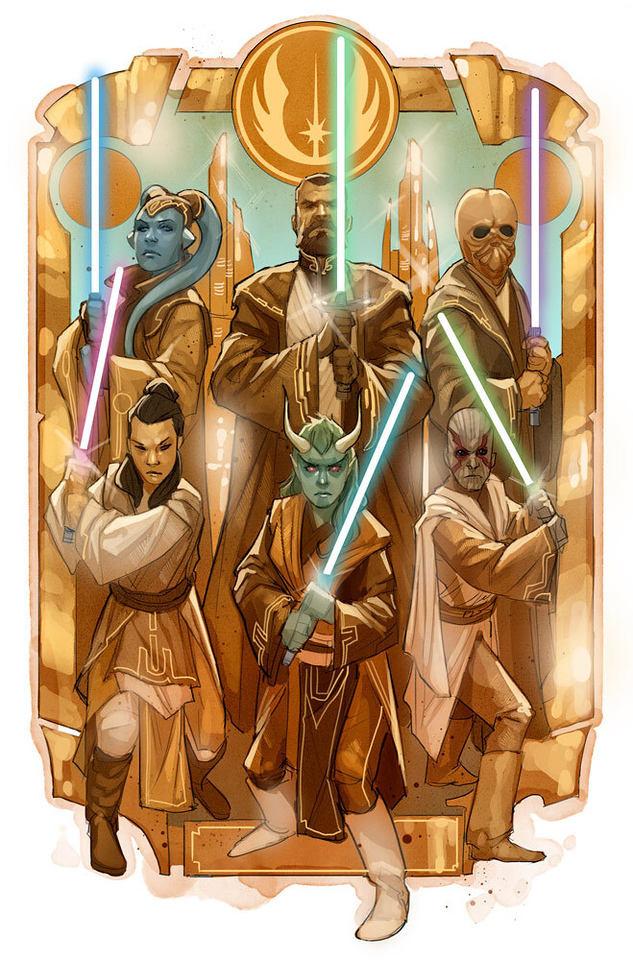
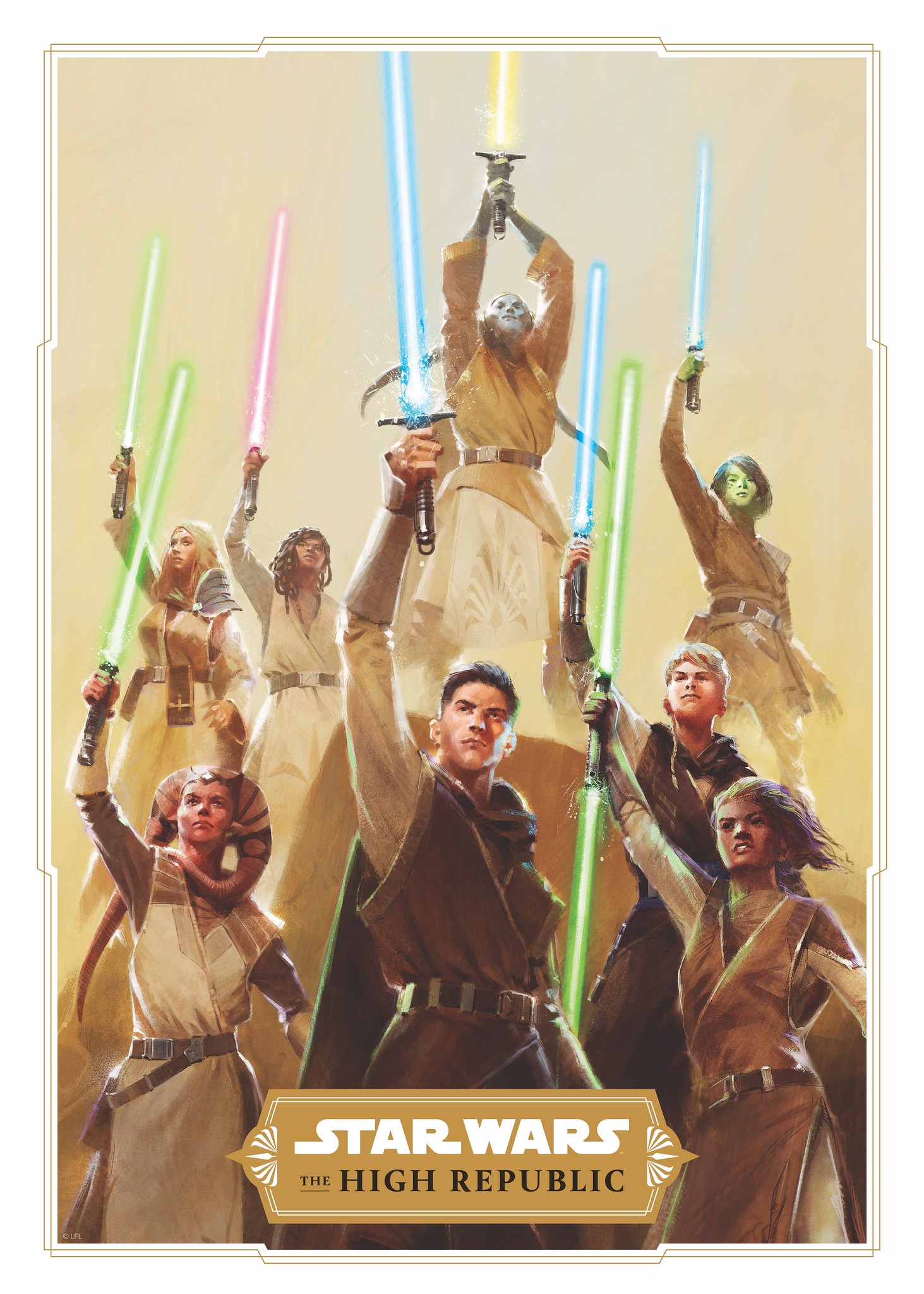
Space.com: You all have very different backgrounds and storytelling approaches. How did all of that coalesce into a unified vision of "The High Republic"?
Claudia Gray: I like the fact that I feel like each of us is still bringing our individual voice. There wasn't any sense that any of us had to compromise that or change fundamentally who we are as storytellers in order to bring what we were going to bring to the story. The universe of it is still evolving as we keep thinking our way through it and keep telling our story. That's part of the joy of this galaxy that George Lucas created. You knew from "A New Hope" that there are centuries, millennia, of history here and we keep getting to expand and find new corners and new paths.
Justina Ireland: I think one of the reasons that this works is because "Star Wars" has always been big enough for anyone. That's one of the things we tend to forget because we gravitate to the storytelling we like most. But we always hear about it when something is bad. I think in this case we have all the right people in the writers room because we have such different things we want. So, if you decide that you hate the kids books, it's cool because Daniel's writing the next one. You have a chance to have different storytelling opportunities, and that for me is really exciting.
Gray: There are those people that are going to try every single one of the 31 flavors of Baskin Robbins, and then they're going to be the people who are in their 50th year of getting chocolate almond.
Older: Because we're telling so many Jedi stories, we're getting to see different perspectives that different Jedi have on the Force, whether they see it as music or as the river or as a city. That's also true of us as storytellers. We have different ways that we come to [a] story and if specifically "Star Wars" story is the Force, it remains what it is, but we bring our different views to it. Our voices are very much intact. And we've learned so much from each other.
Siglain: You know, it goes back to different viewpoints in terms of what works for particular formats — what works for them as storytellers. And that's part of the beauty. It's putting all that into a blender and then adding in hope and optimism, because ultimately "Star Wars" is about hope, right? That's such a strong undercurrent of this.
Scott: I think the one thing I've found is that this is constantly making me up my game, not just because there's a massive responsibility here. We've all been "Star Wars" fans all our lives. I came to "Star Wars," not through the films, but through the comics and the books and then watched the films. So I understand, and we all understand, what this means to people.
I'm also upping my game because I don't want to let any of these guys down as well. We're all putting so much time, so much effort and so much love into this project. I've been doing this for 20 years. I'm now a very different writer than who I was when I started this process a couple years ago. All great characters change when they face a story because that is what a story is.
Space.com: How has "Star Wars" fandom changed over the decades and how does "The High Republic" fit into this new generation of readers?
Older: One thing that's cool is that there are young fans that are really excited about "Star Wars" who come to it fresh and are experiencing certain things for the first time. There's a whole generation whose "Star Wars" is "The Clone Wars," and that's the first thing they saw.
But what I keep thinking about is there's a whole group of people, and especially young people, who are going to find out about "Star Wars" through these books and comics. And they can because we've really designed them to be accessible to folks who don't know a single thing about "Star Wars" and have all the Skywalker saga memorized like we do.
Soule: There are projects here for every kind of "Star Wars" fan and every kind of age level. Whatever your entry point into "Star Wars" has been, there's a project for you and it was very challenging to create. It speaks to Mike's great wisdom in choosing this group of creators because I have never written a middle grade book. So I would be a bad choice to do that.
It feels like we're The Avengers or something like that, to choose another Disney property. Looking back on what we've done, I can't believe we ever thought we could do this. But here we are two weeks out before it's going to be in people's hands and it feels really good.
Ireland: When we first had "Star Wars" novels back in the dark ages before the internet, that was all the "Star Wars" we had. One of the exciting things in the novels, especially in the late '80s and early '90s, is you didn't know what was going to happen because you had no blueprint. And a lot of our novel storytelling in the last 10-15 years has been tied to a film or a TV show or something that already exists in another form of media. What's really exciting about this initiative is nobody knows how this is going to unfold, because we don't have the mild spoilers that've been leaked or even any kind of other storytelling set during this time period.
Space.com: SpaceX, Blue Origin, Virgin Galactic and other private aerospace firms are igniting a new renaissance of interest in space exploration with school kids and adults. How did you inject that spirit of innovation and adventure into the storytelling?
Siglain: Internally, we were calling the characters "the Jedi Knights of the Round Table," because there was an element of Camelot to it. We knew that there needed to be some hope and optimism because these are the good times. They're not the dark times. Yes there are events that will change the galaxy. But this was a point where we could say, "Wow, what does a cool new Jedi starfighter look like?" and "what does a cool new Jedi ground transport look like?" To have some of that feeling of 1960s America to say, "Oh, we can do this, we are all a Republic."
Older: I think what's also cool is because we're meeting the Jedi in a time of peace which we basically have never done before, we get to see how people who have the Force use it in different ways that aren't just fighting back. So, we meet a Jedi Knight early on in IDW who uses the Force to heal. He doesn't have special Force powers. And that's his understanding and connection with how to use the Force, so he's not trying to have any fights. He's just out to take care of people and make them better.
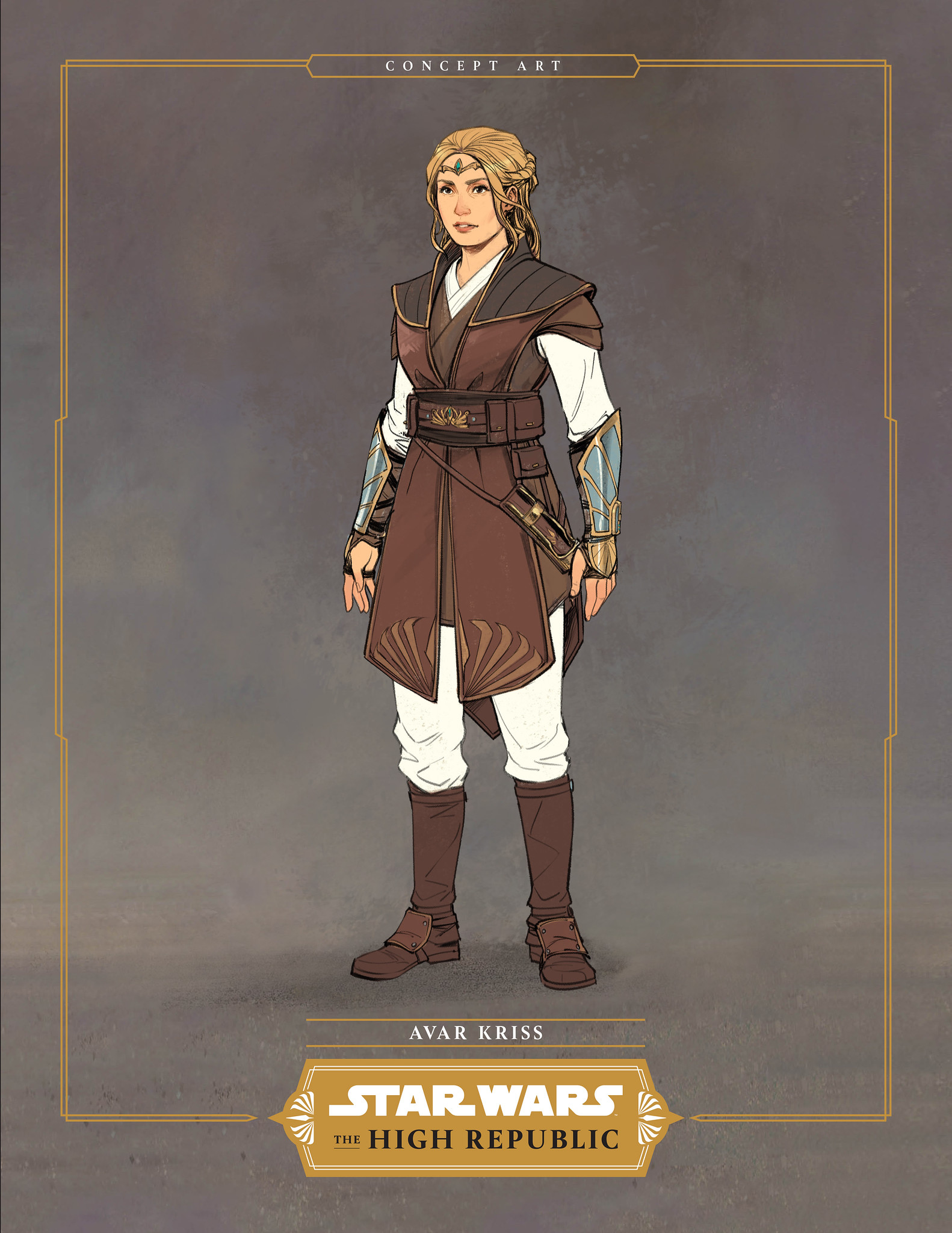
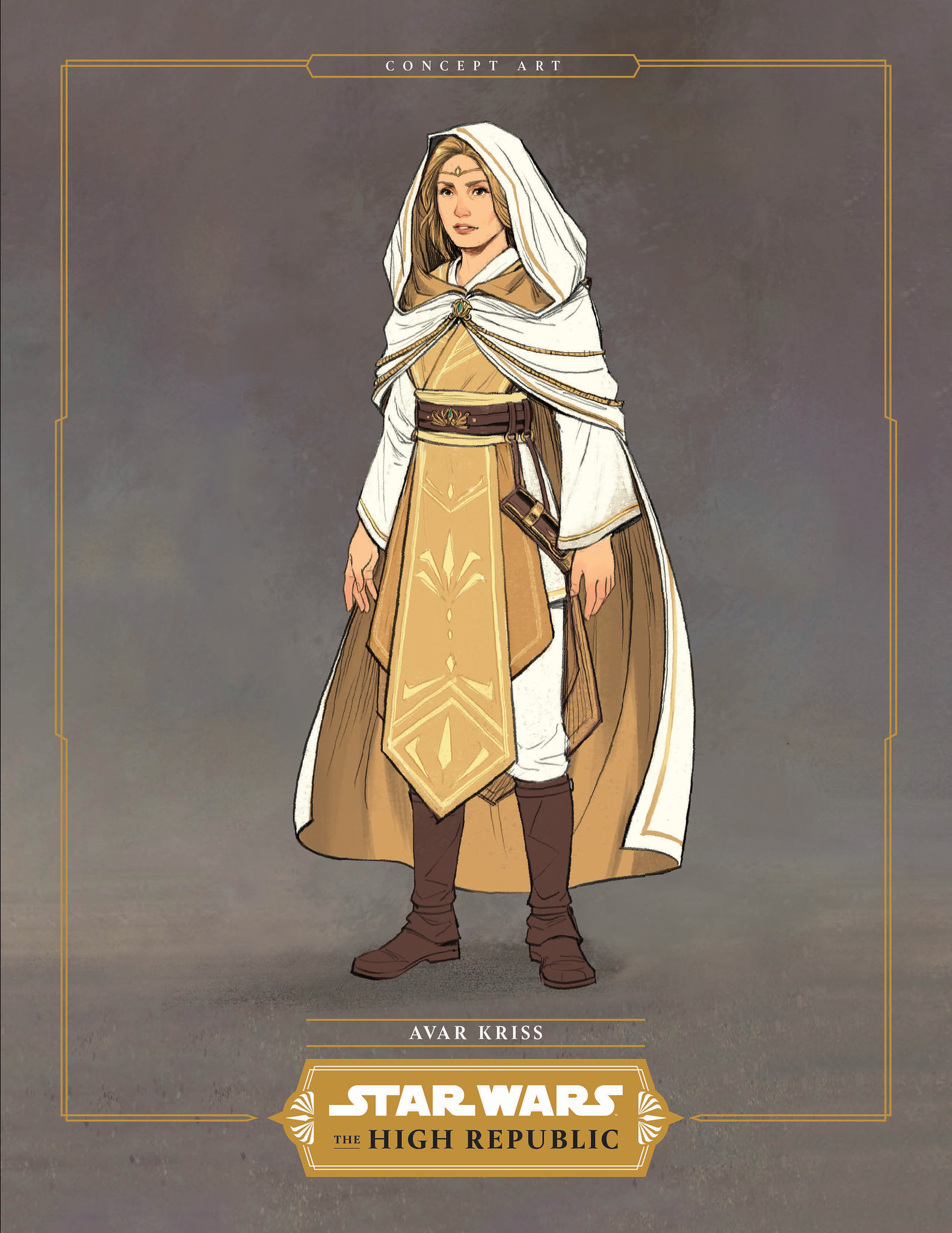

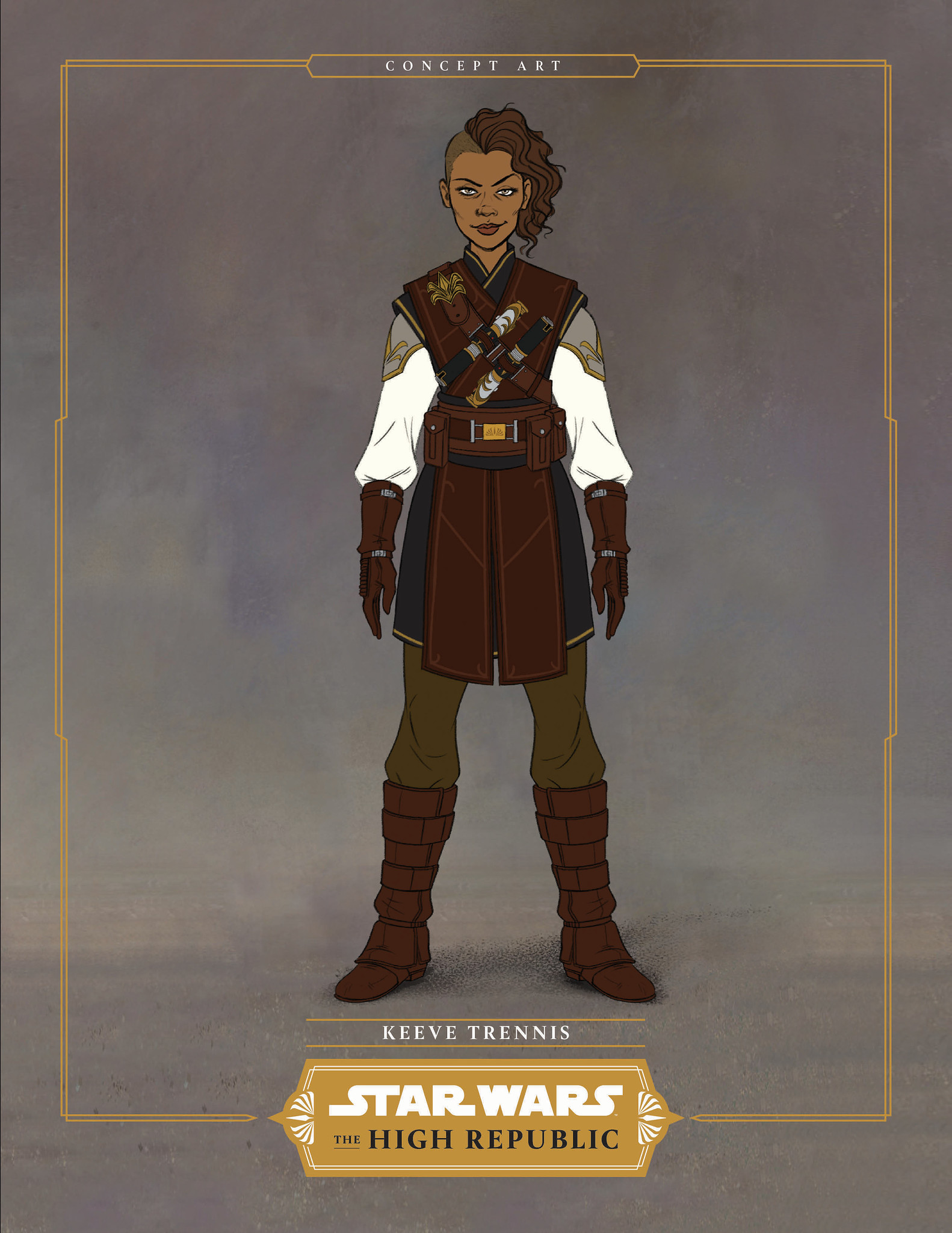
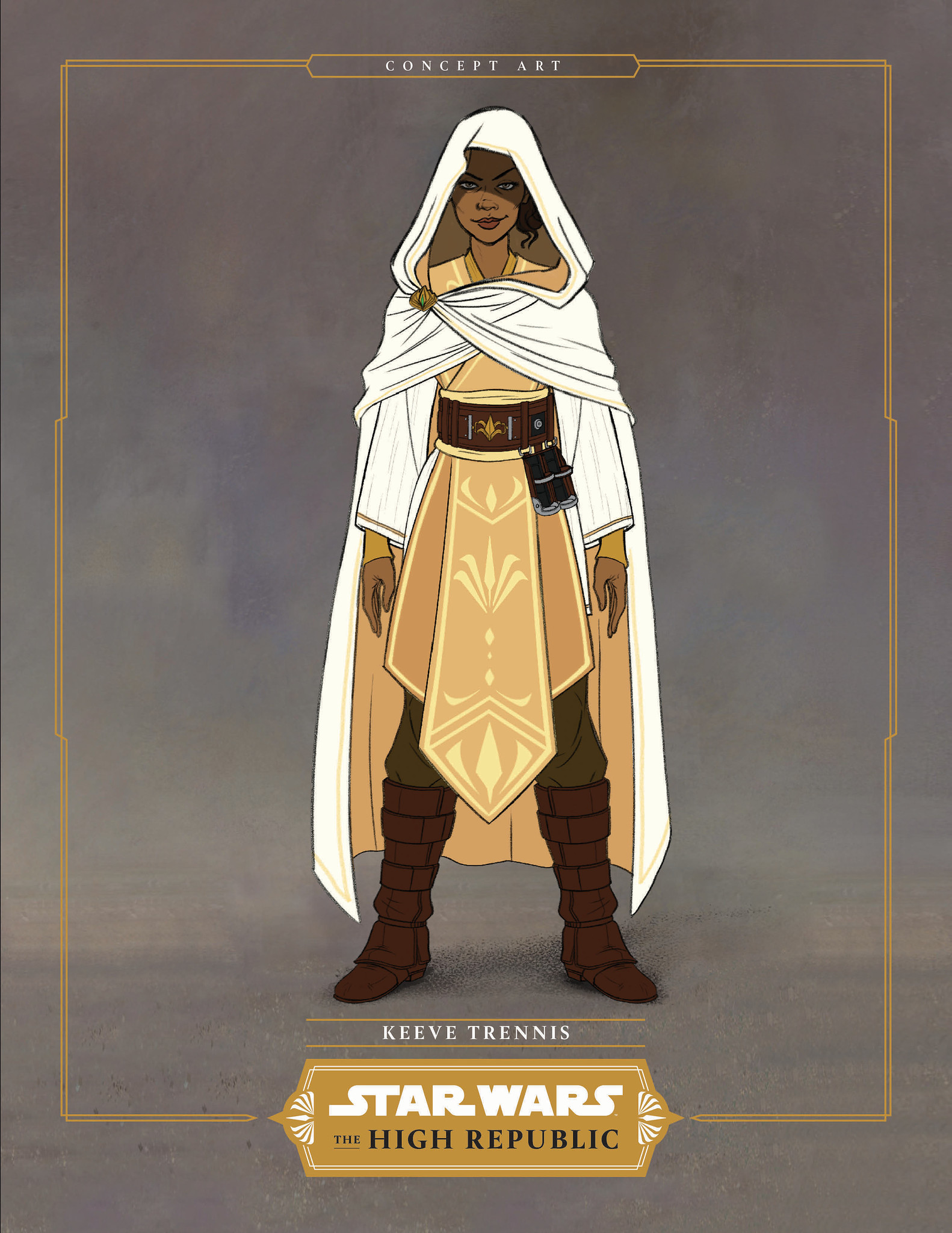

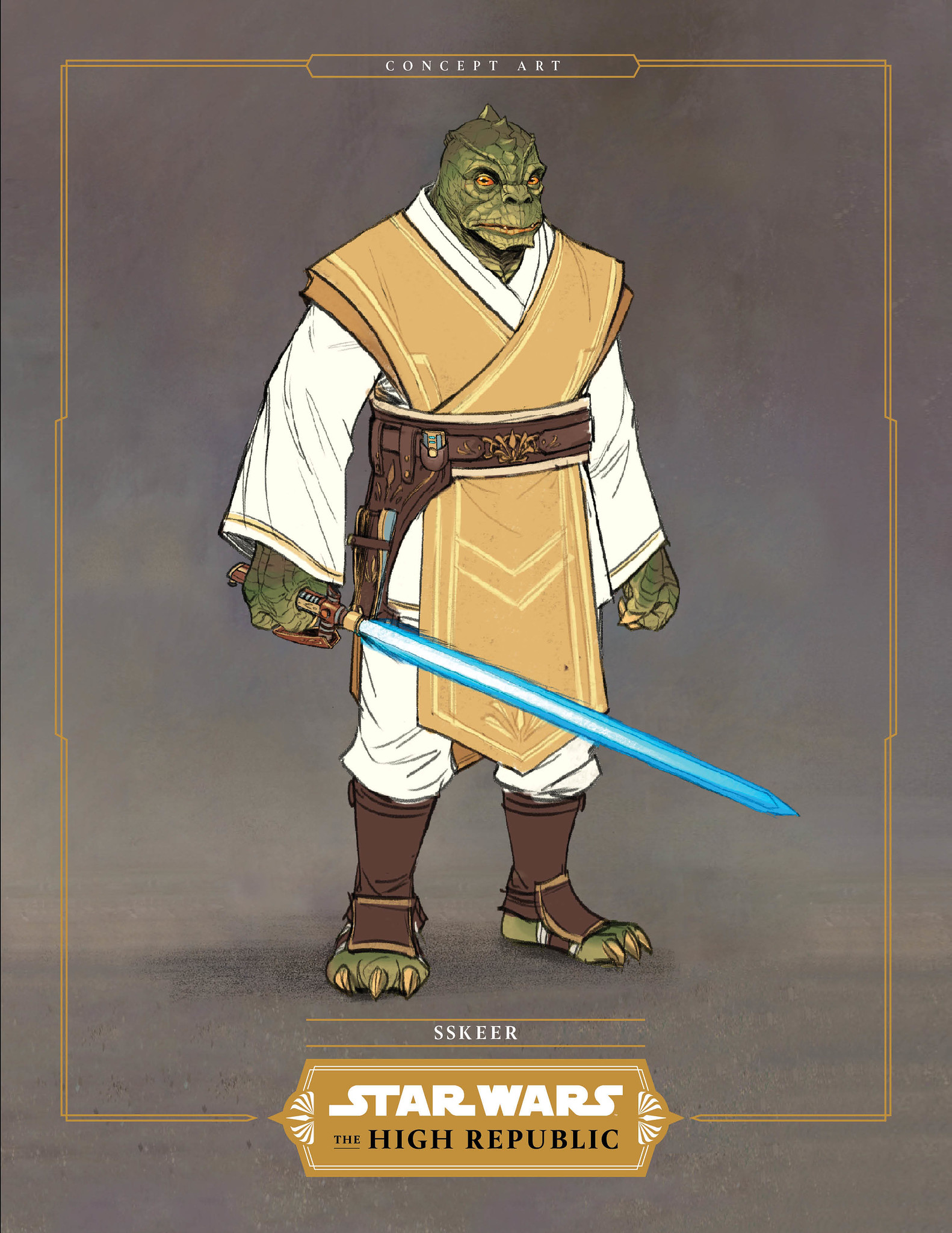
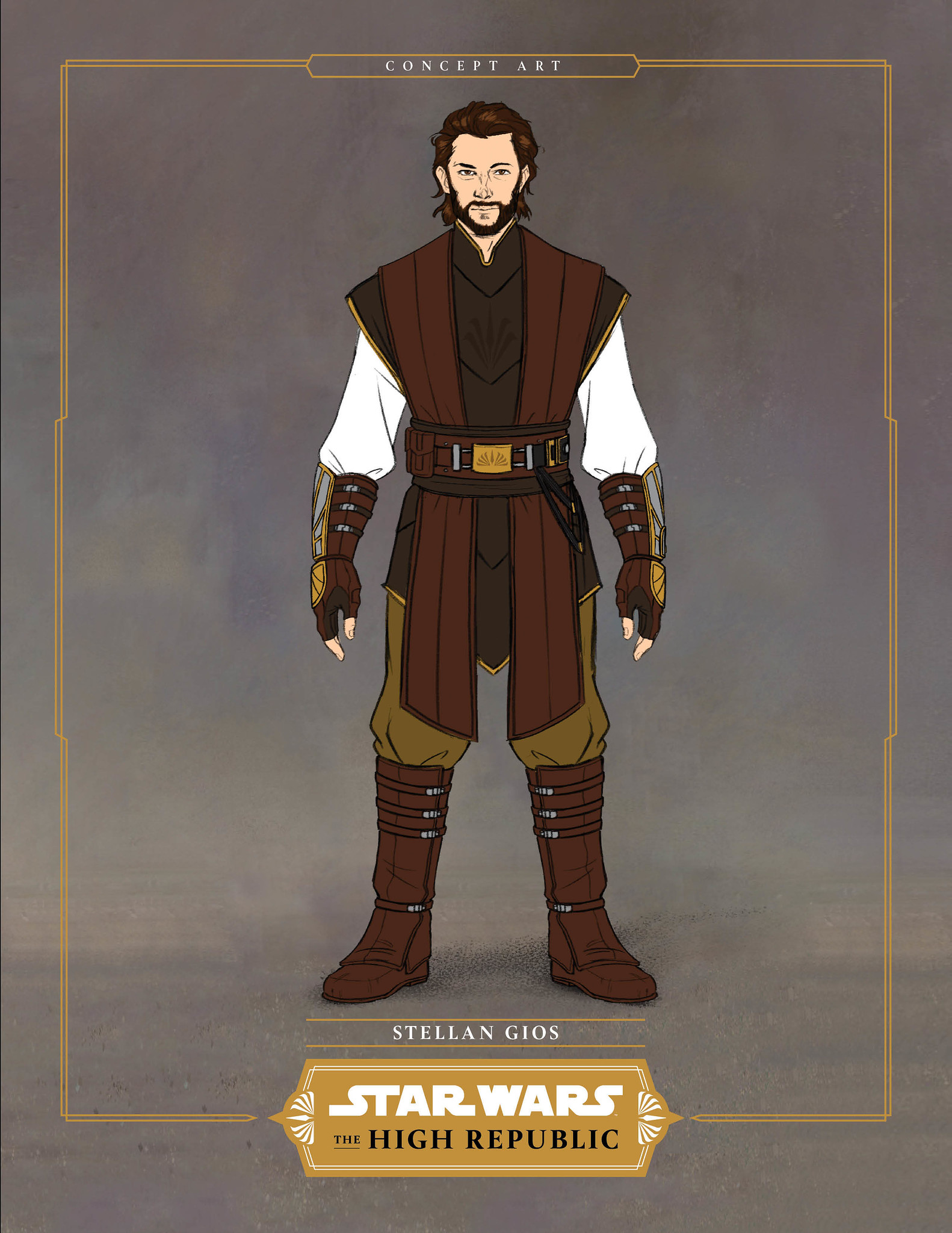
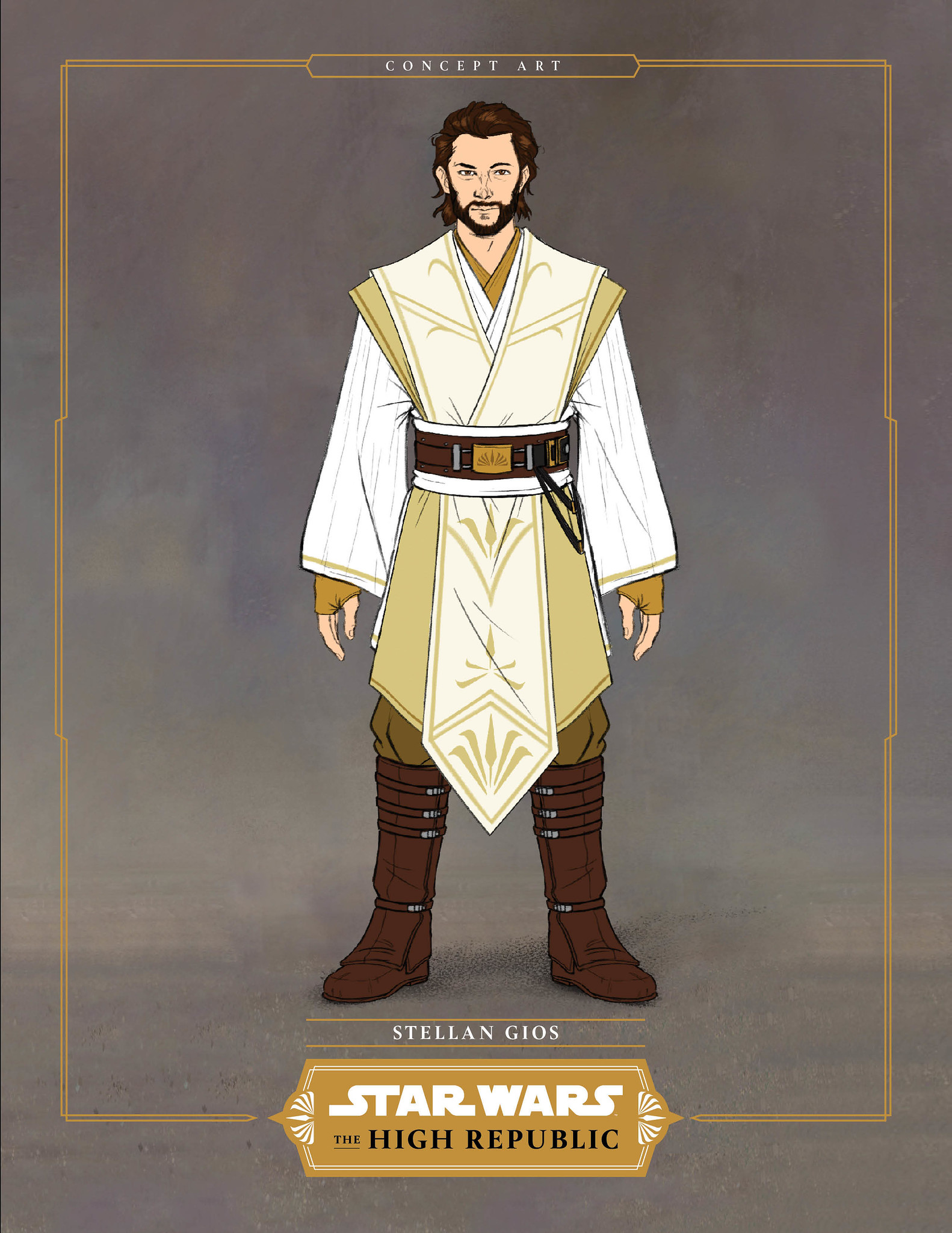
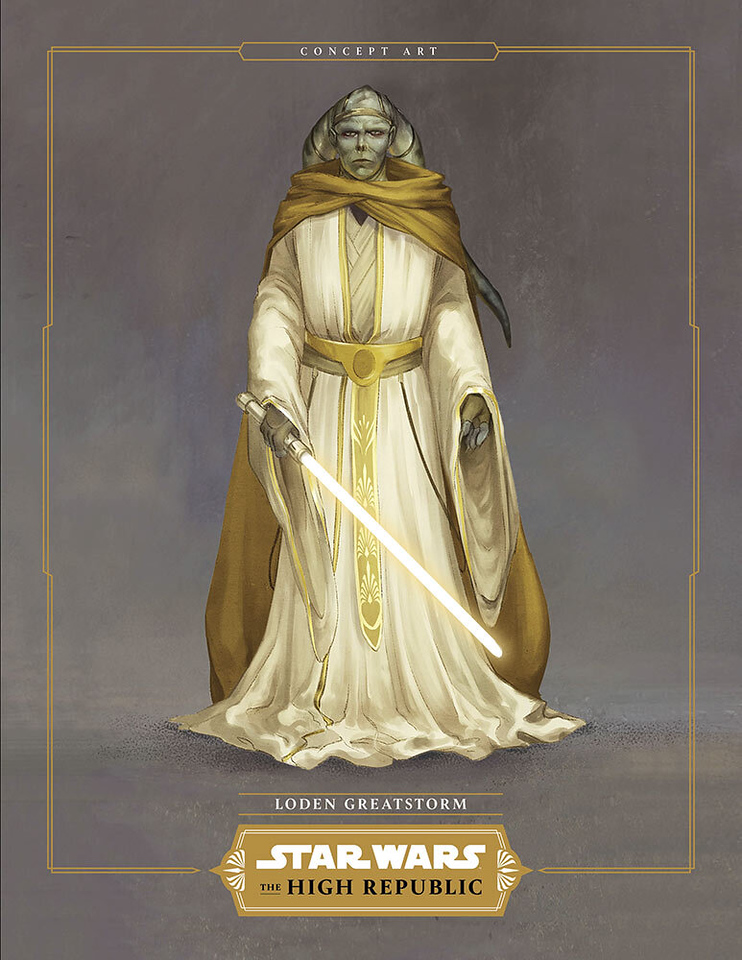
Space.com: How did you arrive at Starlight Beacon space station as a narrative focal point and symbolism for "The High Republic?"
Scott: It was partly because of how we wanted to view the Jedi and the Republic together. That this wasn't a story about the Jedi and the Republic being based on Coruscant and directing from that central planet. We wanted to have both of those grand organizations out with the people, out living alongside other people. In a period of expansion, the frontier would be a very scary place, because at that point communications might not be as great as you're used to back home. You might be far away from the nearest planet that has a proper medi-center.
So, why not take part of that home with you? And one of the key elements of the beacon I love is the fact that there's a literal beacon on the space station. Wherever you are on the frontier, you can tune into it and hear it and know that the Jedi and the Republic are there and that you're not alone and not having to do everything by yourself.
Soule: As "Star Wars" locations go it's super cool. It has everything. In my head I call it the Light Star. It's the opposite of the Death Star in every way. It's a place that's designed to bring light and life and hope to the galaxy as opposed to fear and pain and death.
It's got canteens where people can get food. They have chefs from all over the Outer Rim who bring their native cuisines that people can try from all over the galaxy. There are these biological preserves on it that have places where they bring in plants and animals from different planets.
There's even a whole Jedi Temple on it. It's a Swiss Army knife of awesome things. It just was really fun to think of a location that could be so many things and be so meaningful. The designs of it that the concept artists did are out of this world. It's a beacon of light and hope and I think it's one of the cooler things we've made in "The High Republic" for sure.
Scott: From a dramatic point of view, when you put a light in a dark place, there's going to be people who are happy that the light's there. But there's going to be a lot of people who don't want this shown. They don't want what they're doing illuminated. And so it produces the dramatic catalyst for our story. And so, yeah, that in itself brings a lot of tension and crisis.
Space.com: How did you flesh out the intriguing theme of "what scares the Jedi?" in your story sessions?
Siglain: The idea goes back to our early brainstorming sessions at Skywalker Ranch. This was something that we wanted to explore for the initiative. I think there are little glimpses of what scares the Jedi in these debut books and comics. Ultimately, as we go on, you will see what scares the Jedi and it might not be what you think. So, we have to keep some mystery around this one, but this is definitely a question that will be answered as the initiative continues.
Soule: Mike, are they afraid of snakes?
Siglain: That's Indiana Jones.
Space.com: What's been the most rewarding aspect of working with this elite group of writers and creators and what do you hope readers take out of the books and comics?
Soule: Man, I mean working with this elite group of writers!
Siglain: That's the most fun, getting to create new "Star Wars" stories with these five amazing people and with the other artists and editors who have been involved. I can speak for all of us when I say we grew up with "Star Wars." It was always something that was larger than life. I never in a million years thought one day we're gonna create new "Star Wars" stories and new Jedi and new villains and be in a galaxy far, far away and be able to do that with everyone here.
There is such a desire to create something big and epic and hopeful and fun and scary. And I think they've achieved all of that. I think that these books and comics really are a perfect jumping on point. And also if you've lived with "Star Wars" for 40 years. It's new and original and still very much "Star Wars." I hope readers enjoy it and see it as authentically "Star Wars."
Older: You said it perfectly.
Soule: Yeah, you did it Mike! Well done.
Ireland: I was gonna say going to Disneyland. That's much better than your answer.
Scott: That was a good time.
Siglain: We did do that. We all went to Galaxy's Edge and that was pretty phenomenal.
Gray: Yeah, I can't think of people I would rather have been on the Millennium Falcon with, at least not like real people. [Laughs]. If it's Han Solo, you guys are out of luck. I'm sorry.
Follow us on Twitter @Spacedotcom and on Facebook.

Jeff Spry is an award-winning screenwriter and veteran freelance journalist covering TV, movies, video games, books, and comics. His work has appeared at SYFY Wire, Inverse, Collider, Bleeding Cool and elsewhere. Jeff lives in beautiful Bend, Oregon amid the ponderosa pines, classic muscle cars, a crypt of collector horror comics, and two loyal English Setters.
